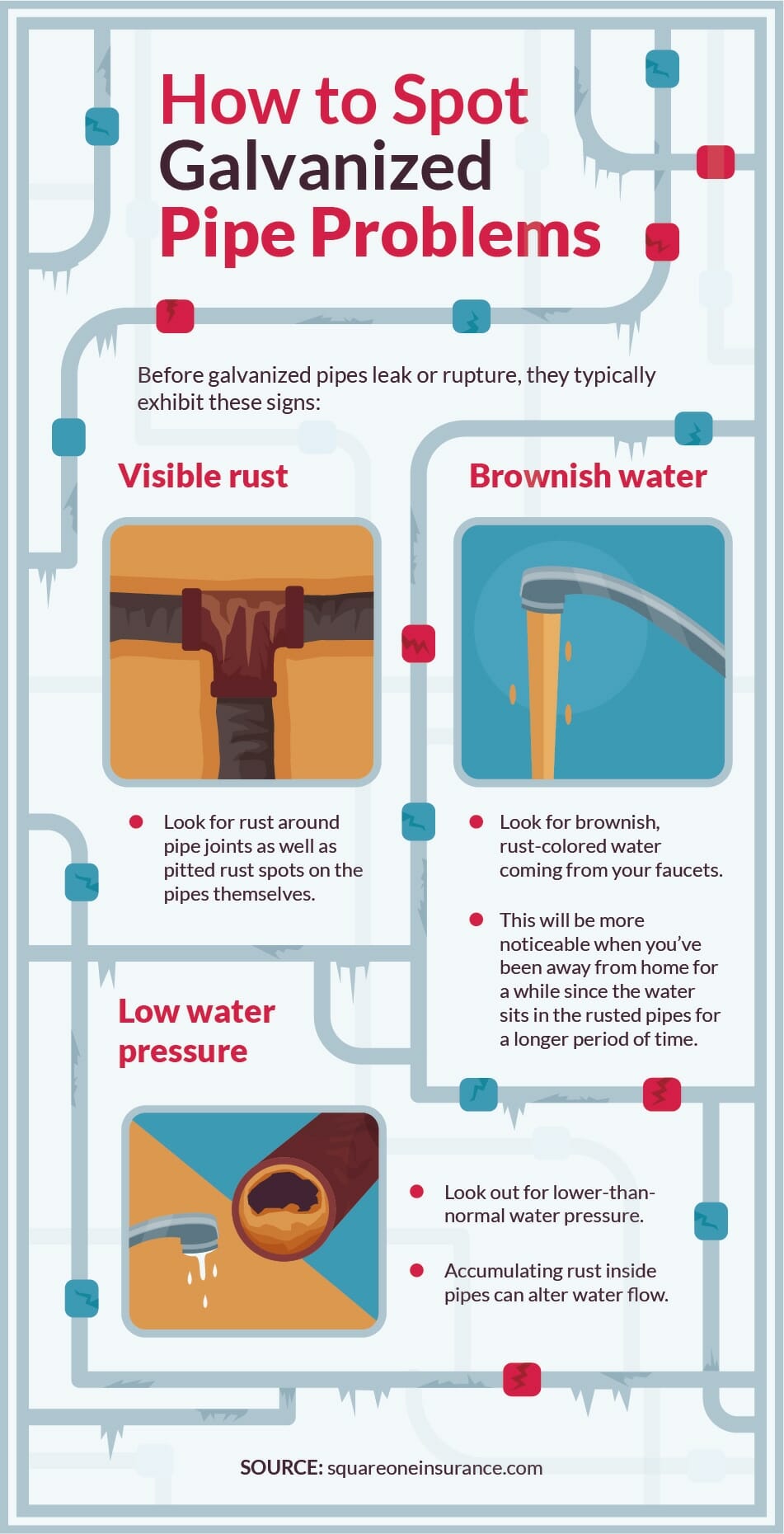
Galvanized Plumbing Problems to Look For
Share this Post
Failure of plumbing pipes has afflicted homes for quite some time. The galvanized plumbing problems come not only from the water that passes through (chemicals and minerals can do a number on pipes over time) or installation issues, but also from the pipes themselves. What exactly is galvanized plumbing and why should they be replaced?
What Is Galvanized Piping?
Galvanizing piping is the process of coating steel or iron with a protective layer of zinc. The goal is to help prevent corrosion.
Houston has so many homes built with galvanized pipes, they were a popular choice in homes built before 1960. While they have a life expectancy of about 20 to 80 years, these pipes are nearing the end of their lifecycle for many homeowners. Because piping is mostly hidden in a home, it’s easy to ignore it until it becomes a major problem.
Galvanized piping can reduce the value of a home because it is prone to failure (which can lead to costly water damage). In some places, homeowners are required to replace galvanized pipes before they sell their home. Since the mid 1940s, copper and plastic piping have been the replacement material of choice, but galvanized pipes are sometimes still preferred for larger industrial projects and outdoor buildings that need the strength of steel.
Top Galvanized Plumbing Problems
-
They Clog Easily
Over time, galvanized pipes corrode and rust. The rust that accumulates inside the pipes makes the passages smaller and smaller, which compromises water flow. Not only does this mean very low water pressure, but it can also mean clogs so dense or big that pipes can burst.
-
They Rust From the Inside Out
Galvanized piping can rust completely from the inside out. Water that passes through a rusty pipe that hasn’t been turned on for a while typically appears brown or rust colored. According to Joe Bany, a John Moore Plumbing Manager, pinhole leaks plague rusted pipes. After pipes rust from the inside out, they will leak and then seal themselves with more rust, Bany says. Then they rust more—to a point where they do not seal back with rust. This, of course, causes water damage. If you take a look at pipes like these you’ll see rust or brown spots on the pipe, which are old pinholes that have leaked and sealed, as well as white or calcium spots on new locations.
-
They Aren’t Very Resilient
The level at which galvanized pipes resist corrosion depends mainly on several factors, including the kind of zinc coating used, how thick the coat is, and the type of environment the pipes are exposed to. According to a report by the U.S. General Services Administration, the coating on galvanized iron and steel can be corroded by acids and strong alkalis and is very sensitive to sulfur acids created by hydrogen sulfide and pollution in urban areas (hello, Houston!).
-
Potential Lead Deposits in Your Drinking Water
A number of studies link galvanized plumbing to elevated levels of lead in drinking water. While we’ve known the dangers of lead pipes and fittings for a number of years, newer research points to lead in the zinc coating of galvanized pipes as a potentially significant source of lead in drinking water. Lead can accumulate in our bodies over time and lead to a host of adverse health effects, especially in children

How to Solve and Prevent Galvanized Plumbing Problems
-
Complete Re-pipe
This is a whole makeover for your pipes. Yes it’s costly, but if your pipes are at or near the end of their life expectancy, it’s best to choose a full replacement before it’s too late. As with all of these options, it’s a good idea to talk to a professional to find out which is the right fit for you.
-
Partial Re-pipe
A partial re-pipe is much quicker. It will stop current issues such as bad leaks. Although the initial cost for this option is much lower than a whole re-pipe, the long-term cost may be more since you may have to do this several times. Additionally, whenever you break an old galvanized plumbing system apart you also break the rust inside the pipe. The rust can then feed through the system, which can lead to major issues at fixtures in the line with the repair
-
Pinhole Patch Up
This is the least invasive and most cost effective of all the options. A patch up stops immediate problems, but doesn’t guarantee they won’t reappear. This is a short-term option and can buy you some time to plan for a long-term solution. Think of this immediate fix as a bandage: You haven’t repaired anything and have only bought yourself some time to address the real issue.
It can be easy to forget our pipes need attention, but knowing the potential problems your galvanized pipes can cause is the first step in protecting and maintaining your home.
For more information on galvanized plumbing, contact us or give us a call at (713) 730-2525. We can answer any questions you have and provide a free estimate for a solution that’s best for you.
Share this Post
<p><a href="https://www.johnmooreservices.com/plumbing-pipes-material-matters/"><img src="https://www.johnmooreservices.com/wp-content/uploads/2017/11/galvanized-pipe-problems.jpg" alt="How-to-Spot-Galvanzied-Pipe-Problems" width="951" height="1860" /></a></p>